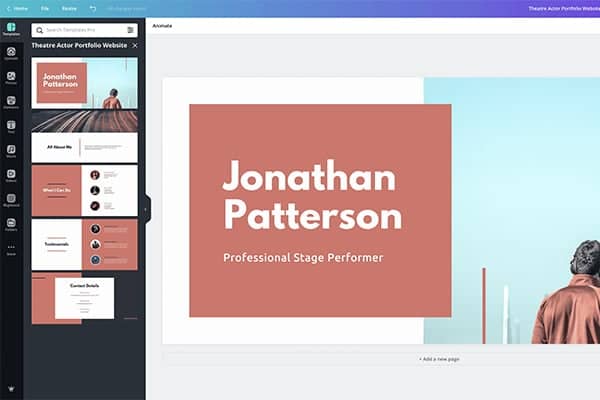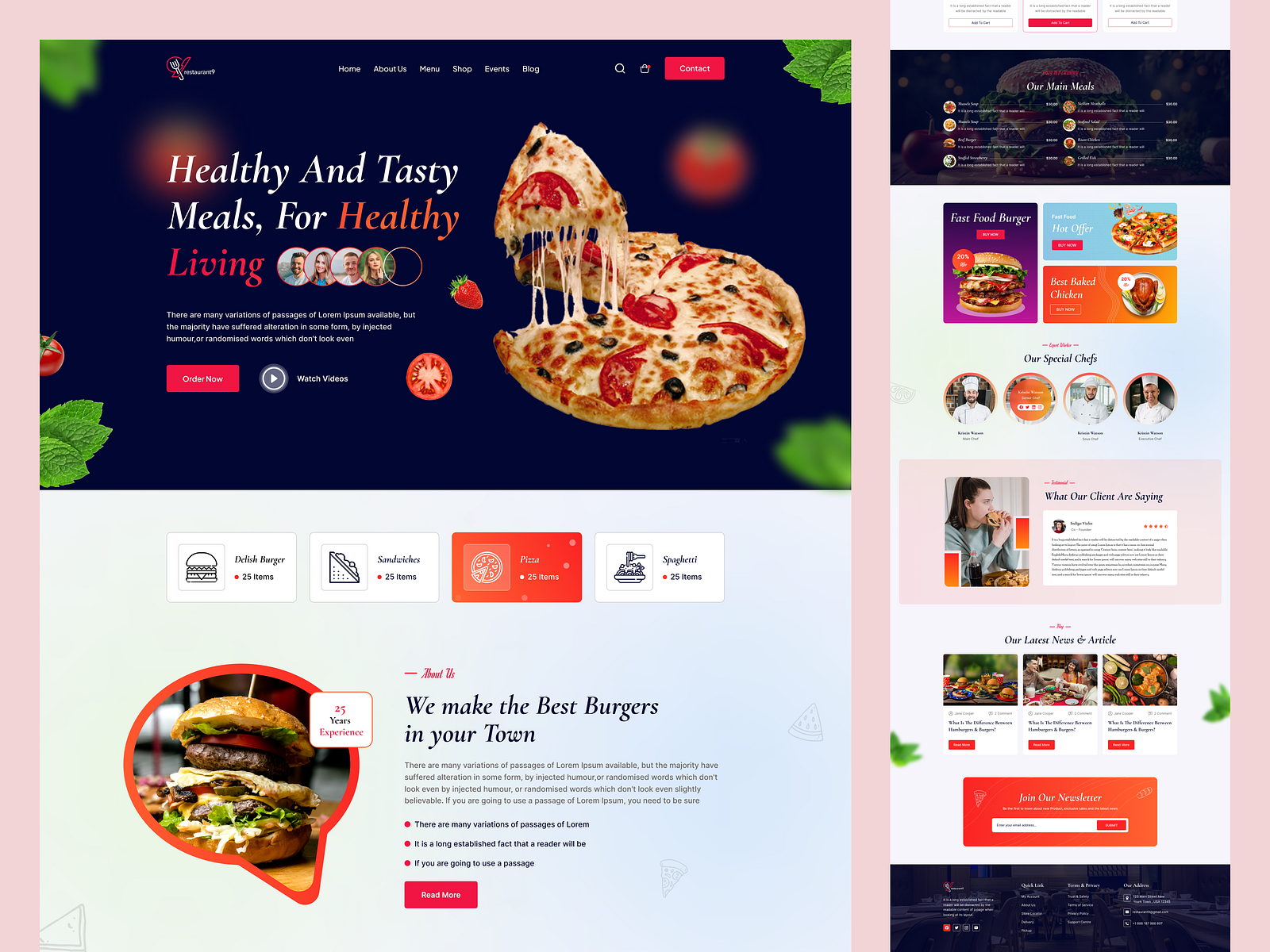How Website Design Helps in Creating a Strong Online Presence
How Website Design Helps in Creating a Strong Online Presence
Blog Article
The Ultimate Overview to Modern Internet Site Style Trends
In the ever-evolving digital landscape, modern web site style trends play an essential role fit user experience and interaction. From the increase of minimal style concepts that prioritize simplicity to the effect of vibrant typography in defining brand identification, each component adds to a cohesive on-line presence. The emphasis on responsive and mobile-first strategies, together with ingenious microinteractions, further boosts functionality. The expanding focus on lasting internet style practices mirrors a dedication to environmental obligation. These fads collectively increase essential concerns concerning the future of effective web design and what it indicates for customers and companies alike.
Minimalist Layout Concepts
Minimal layout concepts highlight the concept that much less is much more, promoting for simpleness and capability in visual interaction. This approach remove unneeded components, concentrating instead on vital elements that communicate the intended message successfully. By focusing on clarity, minimalist design improves customer experience, enabling site visitors to browse internet sites easily.
Core tenets of minimalist layout include the use of ample white area, which produces a sense of balance and company. This negative room not only guides the customer's interest to crucial elements yet additionally cultivates a calming aesthetic ambience. In addition, a restricted color palette is often employed, using monochromatic schemes or soft hues to preserve visual communication and protect against overwhelming the individual.
Typography plays a critical role in minimal layout, where legible fonts are picked for their simplicity and effectiveness in interacting content. Graphics and photos are used moderately, making sure that they serve an objective instead of sidetrack from the general message. Inevitably, minimal style principles grow a concentrated environment that encourages users to engage with the content, improving the overall efficiency of modern-day site layout. This pattern reflects an expanding gratitude for thoughtful, user-centric aesthetic appeals in digital spaces.
Bold Typography Selections
Accepting bold typography options has ended up being a specifying quality of modern internet site style, as it effectively catches interest and shares solid messaging. Designers are significantly making use of typography not simply as a functional component however as a key visual element that enhances the general visual and user experience.

Additionally, the juxtaposition of bold typography with minimal design concepts permits striking contrasts, improving readability while maintaining visual appeal. Using whitespace around vibrant message even more stresses its importance, making certain that the message reverberates with the audience.
As electronic landscapes end up being much more competitive, leveraging vibrant typography makes it possible for brand names to distinguish themselves and leave an enduring impression. The careful selection of font styles and their application can evoke emotions, develop tone, and drive action, making vibrant typography an essential device in modern website style. Inevitably, it is a powerful means to boost storytelling and guarantee that essential messages are not just seen yet likewise felt.
Responsive and Mobile-first Layout
Receptive and mobile-first design has actually become a crucial principle in contemporary site development, reflecting the enhancing dependence on mobile phones for accessing on the internet content. As Related Site customer behavior changes in the direction of mobile browsing, designers have to focus on producing experiences that adjust perfectly throughout numerous display sizes and resolutions.
A receptive style ensures that a website automatically adjusts its format, images, and capability based on the gadget being used. Mobile-first layout advocates for creating sites initially for smaller displays, consequently scaling up to bigger displays.
Applying mobile-first and receptive principles not just satisfies individual preferences however additionally straightens with seo (SEARCH ENGINE OPTIMIZATION) methods. Major internet search engine, like Google, prioritize mobile-friendly internet sites in their rankings, making it important for businesses to take on these style approaches. In a competitive digital landscape, welcoming mobile-first and responsive design is not just a choice; it is necessary for making sure ease of access and engagement with a varied target market.
Involving Microinteractions
Microinteractions play a critical function in improving user engagement and total site experience, especially in the context of mobile-first and receptive design. These subtle layout aspects offer prompt comments to individuals, making communications more enjoyable and instinctive. Instances consist of button computer animations, notice informs, and filling indications, which not just guide customers but additionally develop a sense of link with the user interface.
Incorporating interesting microinteractions can considerably improve use by reducing cognitive tons. When customers obtain auditory or visual responses upon executing activities, such as clicking a switch or sending a form, they feel more confident in their options. This promotes a smoother navigating experience, ultimately enhancing customer retention.

As web site style patterns continue to develop, the relevance of microinteractions can not be overstated. They work as the refined yet effective touchpoints that change ordinary communications right into phenomenal experiences, therefore elevating the total effectiveness of contemporary website design.
Sustainable Website Design Practices
Sustainable go to the website website design practices are coming to be increasingly crucial as the digital landscape expands and ecological issues increase. Developers and developers are acknowledging their duty to create internet sites that not just offer customer requirements however additionally reduce ecological impact. This approach incorporates numerous vital approaches.
Firstly, enhancing energy intake is paramount. Websites ought to be designed to load promptly and successfully, which minimizes web server energy usage and enhances user experience. Techniques such as image compression, decreasing HTTP demands, and making use of modern coding techniques add dramatically to this objective.
Second of all, picking eco-friendly organizing providers is critical - website design. Numerous organizing firms are now powered by renewable resource sources, allowing web sites to run in a much more sustainable manner. This choice shows a commitment to lowering carbon footprints
Furthermore, taking on a minimal layout can boost sustainability. Less components on a page lead to much less information transfer, which not only accelerates filling times however likewise saves sources.
Lastly, advertising electronic accessibility makes certain that web sites get to a broader audience without unneeded bloat, straightening individual experience with environmental obligation. By integrating these lasting practices, internet developers can contribute positively to both individual interaction and the earth's well-being.
Final Thought
In summary, contemporary web site style patterns highlight the integration of minimalist principles, vibrant typography, and receptive layout to boost individual experience. Taking on these patterns is essential for developing impactful digital experiences that resonate with individuals in a significantly competitive on-line landscape.
In the ever-evolving electronic landscape, modern website layout trends play an important role in shaping user experience and engagement. By prioritizing quality, minimalist style improves individual experience, allowing site visitors to browse sites easily.
Inevitably, minimal design concepts cultivate a concentrated environment that motivates customers to go to my site engage with the material, improving the general performance of contemporary website layout.Microinteractions play an essential function in enhancing user involvement and total site experience, particularly in the context of receptive and mobile-first style.In summary, modern internet site design trends stress the assimilation of minimal principles, strong typography, and receptive style to enhance customer experience.
Report this page